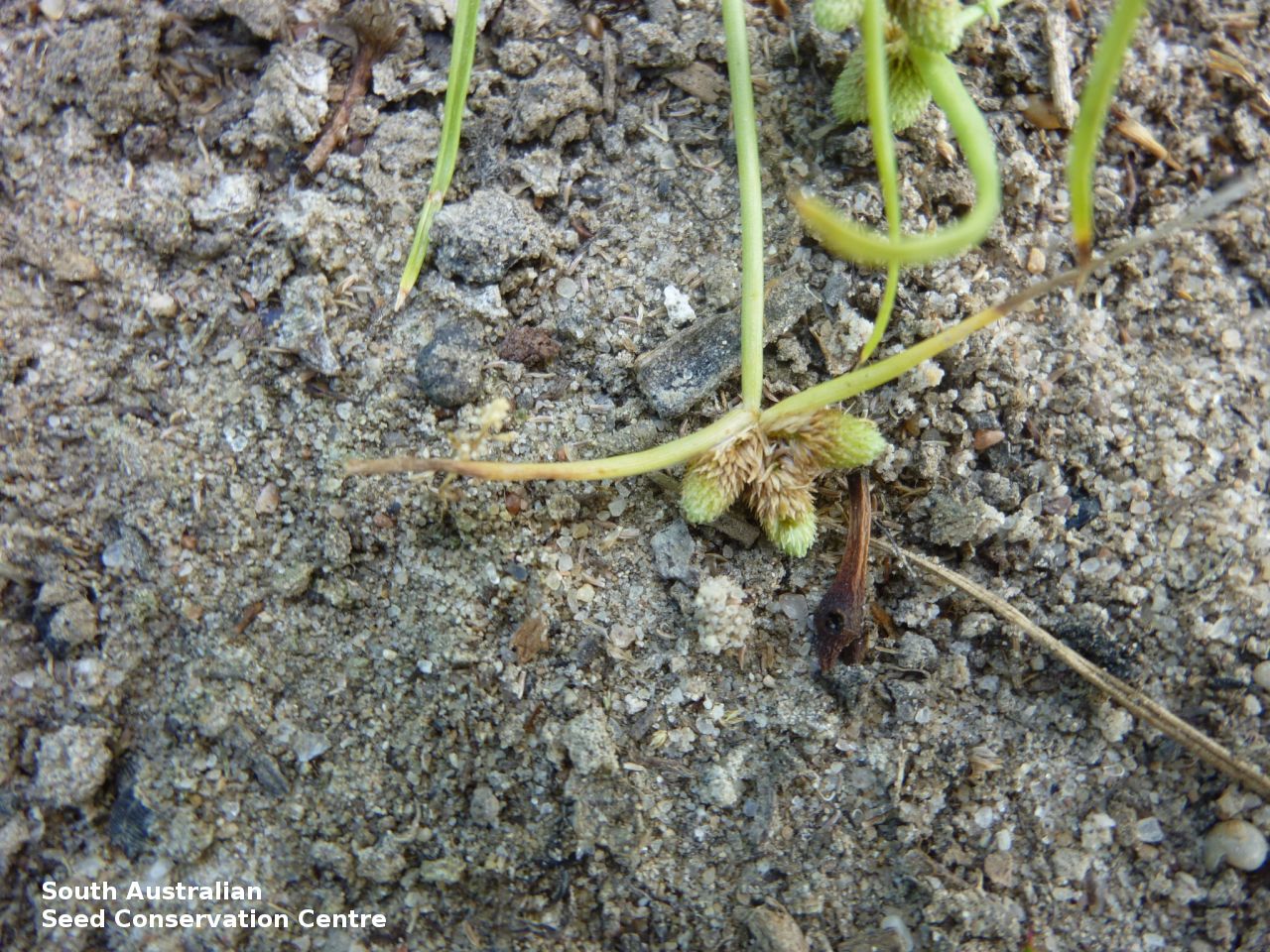Cyperus leptocarpus
Cyperaceae
Button Rush
Display all 13 images











Regional Species Conservation Assessments per IBRA subregion.


Least concern
Near threatened
Rare
Vulnerable
Endangered
Critically endangered
Extinct
Data deficient
Adelaide
Arkaroola
Ceduna
Coober Pedy
Hawker
Innamincka
Marla
Marree
Mount Gambier
Oodnadatta
Renmark
Wudinna
Keith
Yunta
Display IBRA region text
Botanical art
Prior names
Rikliella australiensis
Hypaelyptum microcephalum
Lipocarpha microcephala
Etymology
Greek 'liparos' shining, 'karphos' chaff and 'micro' small, 'cephale' head.
Distribution and status
Grows in open damp places such as sandy stream banks. Native
Herbarium regions: North Western, Flinders Ranges, Murray
NRM regions: Alinytjara Wilurara, South Australian Murray-Darling Basin
AVH map: SA distribution map (external link)
Plant description
Annual, with slender stems and filiform basal leaves. Inflorescence of 1-4 ovoid spikes. Spikelets oblong-obovate, 1-1.7mm long, pale brown often tinged red-brown. Flowering March-April. Fruits are nut subterete, very narrow-ellipsoid, 0.7�1 mm long, 0.2 mm in diameter, pale brown.